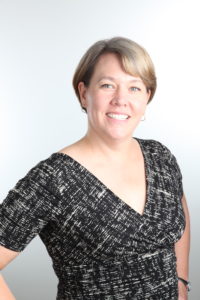
Teaching about Social Justice Intersectionally
For many years I have been involved with a team of instructors teaching a required first-year formation class at the Iliff School of Theology. Initially called “Identity, Power, and Difference,” we designed this class to invite students to reckon with the realities of structural inequality and oppression in relation to their vocational paths. Our goal was to increase student commitment and capability for seeking justice as a core part of their religious leadership in multiple contexts. Additionally, the course was designed to allow students the space to begin to wrestle with the emotional and personal implications of these systemic issues before they encountered them in classes in Christian history, theology, ethics, sacred texts, and practical theology. In those courses, they would need to work with these issues in more complex academic ways, and not become overwhelmed or resistant because of fragility or novice learner status. This is particularly important for students whose identities often place them on the upper side of hierarchies of privilege and oppression and who were not practiced in understanding and navigating such realities.
One of the commitments early on was to attempt to work intersectionally, rather than learning about oppression identity category by identity category. We didn’t want to begin working with racism, then sexism, heterosexism, classism, and maybe have time in a ten-week quarter to get to oppression rooted in ability, religion, nation of origin, age, etc. We wanted to avoid setting up the idea that these are competing categories demanding attention and redress. Many helpful resources (such as the Teaching for Diversity and Social Justice textbook edited by Maurianne Adams and Lee Ann Bell) take precisely this approach, providing materials that focus on one area of identity-based oppression at a time. There is a clarity of focus on each particular form of oppression in this approach. However, the realities of intersectionality, first articulated by legal scholar Kimberlé Crenshaw, mean that doing so often makes invisible the experiences of those who reckon with multiple forms of intersecting oppression. It also obscures the ways that a single person may have a complex identity matrix that includes both targeted and dominant elements (gay white men or straight women of color, for example). The concern is that imagining that these forms of oppression work independently from one another, or that they do not develop together historically or inflect one another constantly, sets students up to focus on one aspect and fail to recognize complex social dynamics in which their work occurs and the shifting ways their embodiment is interpreted by those around them.
Of course, all forms of oppression and inequality do not function in the same way. But, we found that working thematically, and then providing examples of how those themes play out within different contexts and structures, helps students see patterns and intersections as well as distinctions between particular forms of injustice as they are practiced and institutionalized. For example, we begin with the theme that difference is socially constructed at particular moments in history, becomes embedded in institutions and systems, and creates material inequalities with its hierarchical sorting of humans. We look at this from multiple vantage points, from disability studies to critical race theory to gender studies, privileging personal narratives and historical examples that involve more than one identity category. Likewise, when we work on the theme of the relationship between privilege and oppression, we explore how these dynamics work with Christian privilege, class privilege, white privilege, cisgender, and male privilege. Other themes we explore include everyday intersectionality, modes of resistance, solidarity and accomplicing, and communal vocational discernment.
Teaching intersectionally means that students often find themselves simultaneously being challenged and their experiences affirmed in relation to various themes. At times they recognize their own privilege, and at times they recognize how their experiences and embodiment have been targeted and made invisible by social structures and practices of distinction. Our hope is that by working at the intersections, we help build empathy, solidarity, and recognition of difference that will allow our students better to acknowledge, navigate, and dismantle injustice in the everyday interactions of religious leadership. Such work begins in the classroom and, of course, requires committed communal work of all of our lifetimes to complete.
Leave a Reply